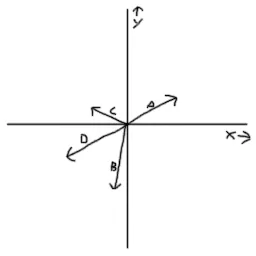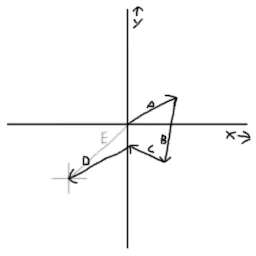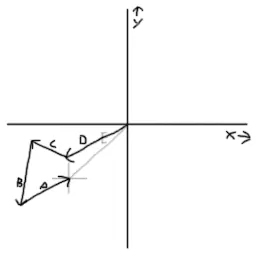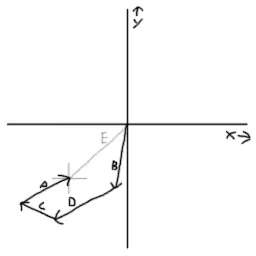This is a more basic article, in that most people dealing with 3D graphics probably have a pretty good idea how addition works, but it may still provide some insight into how to visualize vector addition. I thought it was pretty cool myself as I was drawing the figures.
One of the most basic laws about adding numbers is that if [color="#8B0000"]A + B = C[/color], then [color="#8B0000"]B + A = C[/color] is also true. Likewise, if [color="#8B0000"]A + B + C = D[/color], then [color="#8B0000"]A + C + B = D[/color], and [color="#8B0000"]B + A + C = D[/color], and [color="#8B0000"]B + C + A = D[/color], and [color="#8B0000"]C + B + A = D[/color], and [color="#8B0000"]C + A + B = D[/color]. No matter which order you add the numbers, they always add up to D.
The same rule holds true when adding Vectors (groups of numbers). The way you add vectors is you take the first components and add them together to produce the first component of the resulting vector, take the second components of the vectors and add them together, and continue until all components are added. Vectors are commonly only 2 component or 3 component, to represent points in 2D (flat) and 3D space, but they can be more. To add [color="#8B0000"](6, 2) [/color]with [color="#8B0000"](11, 3)[/color], the result is [color="#8B0000"](6 + 11, 2 + 3) [/color]or [color="#8B0000"](17, 5)[/color].
Now comes the fun part, visualization. This first picture shows 4 two-dimensional vectors, all coming from the origin (point [color="#8B0000"](0, 0)[/color]).
The following images show how to visualize adding the four vectors together. If you connect all the vectors together, head to tail, head to tail, starting at the origin and progressing through space, they will end up at a point which when considered as a vector itself starting at the origin, is the result vector of the addition. As with normal addition, the order you connect the vectors head to tail does not matter at all. In the three examples, the order is always different, but the final point always lands on the tip of the new vector [color="#8B0000"]E[/color], which is the result of the addition. This visualization trick works in 3D as well as 2D.
Vector Subtraction can be visualized in the same way, except that when you subtract a vector, you stick its head to the point where its tail would normally attach, and as with normal subtraction, the order in which you subtract vectors DOES matter. You can use visualization to help make sure you're subtracting vectors in the right order.
Copyright 1998-1999 by Seumas McNally.
No reproduction may be made without the author's written consent.
Courtesy Of Longbow Digital Artists
Presents graphically what adding two vectors represents.
Advertisement
Recommended Tutorials
Advertisement
Other Tutorials by Myopic Rhino
27037 views
24414 views
Advertisement







